Are you facing issues setting up your grow tent? This guide simplifies the process, covering essential equipment and a step-by-step setup process. It offers clear instructions to help beginners start their cultivation journey confidently. Readers will learn how to maximize benefits from their grow tent while avoiding common pitfalls. This resource addresses real challenges that adult cannabis enthusiasts experience, helping them achieve optimal growing conditions and success in cultivation.
Key Takeaways
- a grow tent creates a controlled environment for optimal plant cultivation
- it offers precise control over lighting, humidity, and nutrient delivery
- proper equipment use supports steady plant development and resource efficiency
- regular monitoring of pH and moisture keeps plant health balanced
- efficient ventilation reduces mold risks and maintains a stable setup
Understanding Grow Tents and Their Benefits
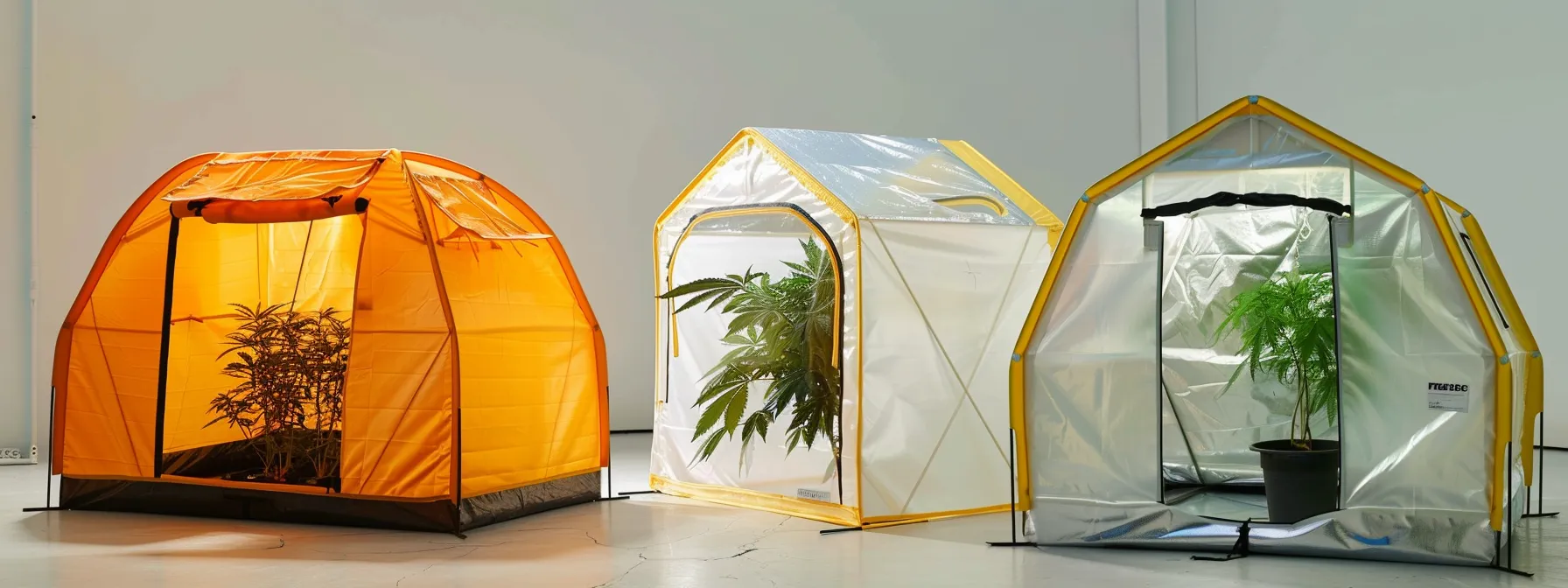
This guide explains what a grow tent is and its functions. It highlights benefits like controlled water use and effective lighting, helping beginners choose from various designs including nylon models. Details on setting up a tray, using a ph meter, and insights from bestmarijuanaguide.com ensure readers gain practical cultivation tips.
What Is a Grow Tent and How Does It Work?
A grow tent is a controlled environment designed to optimize the cultivation process, providing adjustable lighting with diode systems and efficient use of money by minimizing resource waste. The design supports various setups, including models suitable for a bedroom or closet, ensuring that every element, from humidity to ventilation, is precisely managed for a productive harvest.
This innovative space offers users the ability to regulate essential factors crucial for plant growth while efficiently incorporating specialized equipment such as ph meters and hash oil applications. The setup acts as a reliable guide for cultivating plants under confined conditions, equipping beginners with practical insights and techniques that reflect expert practices.
Key Advantages of Using a Grow Tent for Cultivation
The setup of a grow tent provides controlled conditions that allow cultivators to manage variables like height and root development effectively. The optimized environment minimizes excess wire management and helps users adhere to a specific budget by reducing unnecessary resource expenses.
The grow tent's design supports precise control by requiring a secure password for adjustments and monitoring systems, ensuring that each system functions as expected. Its efficient layout encourages easy access to essential features while promoting robust plant root systems for stronger growth.
Common Types of Grow Tents for Beginners
For beginners, selecting the correct grow tent can make a notable difference in plant development and speed of energy use. Options range from basic, lightweight tents to sophisticated units designed to optimize conditions for each bud and overall harvest outcomes:
| Type | Weight | Focus |
|---|---|---|
| Basic Model | Light | Efficient setup for small spaces and minimal resource use |
| Advanced Model | Moderate | Provides improved controls for ensuring better bud formation and harvest quality |
Different designs support various needs, such as controlling the weight imposed by extra equipment while maintaining steady plant growth and bud health. The system offers practical setups that help users manage cultivation speed and quality, ensuring each plant reaches its full potential by harvest time.
Essential Equipment for Your Grow Tent Setup
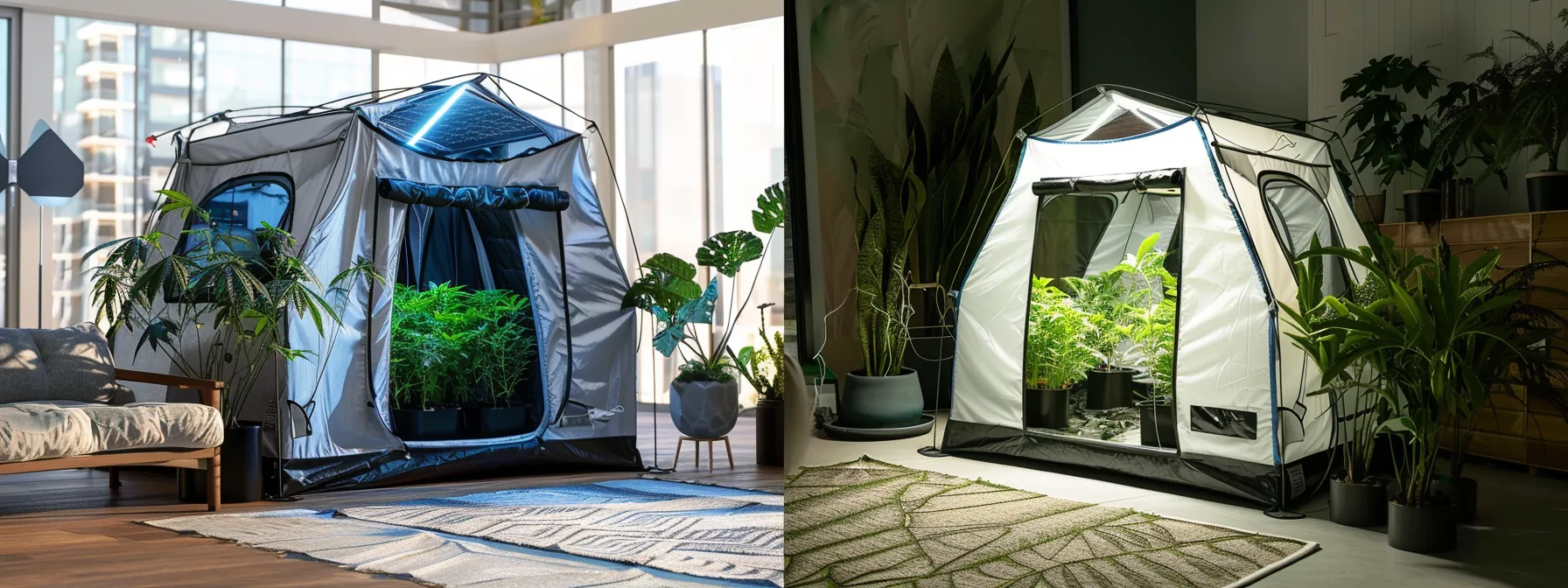
This section outlines crucial elements for a successful grow tent setup. Topics include the role of a bulb in a quality grow light system, soil, nutrients, and pots for optimal growth, and choosing effective ventilation systems with carbon filters and a hygrometer. Readers may also find it helpful to share feedback via their email address.
Grow Lights and Their Importance
Grow lights play a critical role in optimizing plant development within a grow tent setup. They ensure that plants receive consistent energy, which is particularly beneficial for systems like deep water culture, where maintaining the right moisture levels is essential. Components such as a secure zipper on tent openings and durable plastic fittings on lighting fixtures help create a reliable and efficient environment.
Proper lighting promotes balanced growth by ensuring energy reaches every area of the tent without significant loss. Experts recommend using high-quality fixtures that incorporate features like a sturdy rope for hanging and secure plastic mounts, ensuring longevity and stability throughout the cultivation process.
Soil, Nutrients, and Pots Needed for Successful Growth
Successful growth in a room dedicated to cultivation depends on selecting the right soil, nutrients, and pots; using a high-quality brand for these essentials ensures reliable performance. Precise ph measurements and regular data monitoring help direct nutrient applications, making growers confident in their set-up and its overall effectiveness.
Effective planning for a grow tent setup also involves the use of an extension cord to securely power various devices while maintaining a safe environment. Practical advice from experienced cultivators demonstrates that purchasing trusted brands for soil and nutrient solutions, and incorporating the right equipment, supports consistent improvement in plant development.
Ventilation Systems to Consider
Effective ventilation systems serve as a critical tool in the cultivation process by efficiently controlling odor and ensuring that every leaf within the grow tent receives fresh air. Modern metal systems paired with high-quality fans provide reliable performance that can complement cloning setups and stabilize interior conditions.
Optimized ventilation minimizes odor buildup and promotes robust plant development, ensuring that sensitive vapors do not compromise the environment. Industry professionals often recommend metal components for their durability, which integrates well with cloning and other cultivation techniques to maintain a balanced climate.
Step-by-Step Guide to Setting Up Your Grow Tent
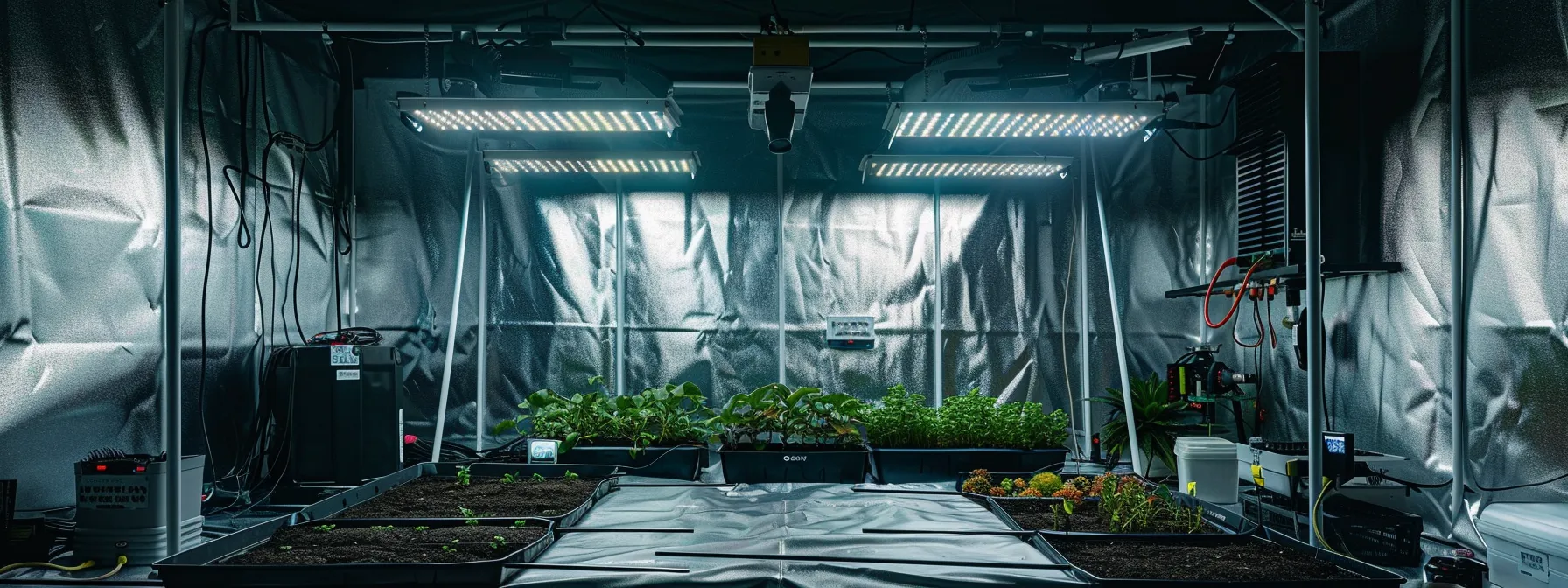
The guide outlines selecting the right location for optimal airflow, assembling the grow tent frame, installing high-quality grow lights and reflective materials, and setting up ventilation systems to manage pest control effectively. Practical insights include proper attention and use of potting soil, ensuring every garden setup element contributes to a productive cultivation process.
Selecting the Right Location for Your Tent
The location for a grow tent should offer consistent environmental conditions and easy access to essential elements such as plant nutrition and pest control strategies. The arrangement must prevent any leak issues from impacting the tent's integrity while ensuring that the canopy receives uniform light distribution during cultivation.
Selecting an ideal spot requires evaluating factors including accessibility for routine maintenance, proximity to a power source compatible with bluetooth-enabled devices, and a clear area that facilitates efficient pest control measures:
| Factor | Description |
|---|---|
| Environment | Stable conditions to support plant nutrition and minimize leaks |
| Lighting | Ample space beneath the canopy with clear pathways for maintenance |
| Connectivity | Area that supports bluetooth integration for monitoring systems |
| Safety | Designated space for effective pest control and resource management |
Assembling Your Grow Tent Frame
When assembling the grow tent frame, the process begins with securely connecting the support poles to form a stable structure. The setup ensures that every component, from the nutrient feeder systems to flood irrigation channels, fits neatly under the ceiling, providing consistent support for the growing plants.
The assembly process requires careful planning to maintain optimal space for devices such as coir-based substrates and trichome-enhancing accessories; use the following steps as a guide for efficiency:
- Align the base structure evenly on a flat surface
- Secure the framework with durable connectors
- Confirm that the alignment supports proper distribution of lighting and nutrient systems
Installing Grow Lights and Reflective Materials
The installation of grow lights and reflective materials plays a key role in reducing stress on plants while ensuring they receive balanced energy. Experts advise using a trellis to support lighting fixtures and a dehumidifier to maintain optimal moisture levels, offering clear guidance on how to set up a grow tent efficiently.
Practical recommendations emphasize positioning lights to maximize energy uniformity and protect delicate buds from stress. Maintaining proper spacing, along with readily available accessories, allows cultivators to create a responsive environment that simplifies the learning curve in modern grow tent setups.
Setting Up Ventilation and Airflow Systems
Effective airflow design in a grow tent is crucial for maintaining stable internal temperatures, and the setup process includes positioning a robust ventilation system near the Best Grow Tents for Cannabis units to manage noise and reduce excess humidity. Professionals often pair this system with a thermometer to ensure that the environment remains within optimal ranges, supporting timely nutrient applications with quality fertilizer products.
A reliable ventilation setup also involves careful placement of exhaust and intake fans to circulate fresh air throughout the tent while minimizing disruptive noise, ensuring solid performance even when using diamond-grade lighting systems. This method provides cultivators with practical control over airflow that aligns with operational goals and supports each phase of plant development effectively.
Choosing the Best Plants for Your Grow Tent
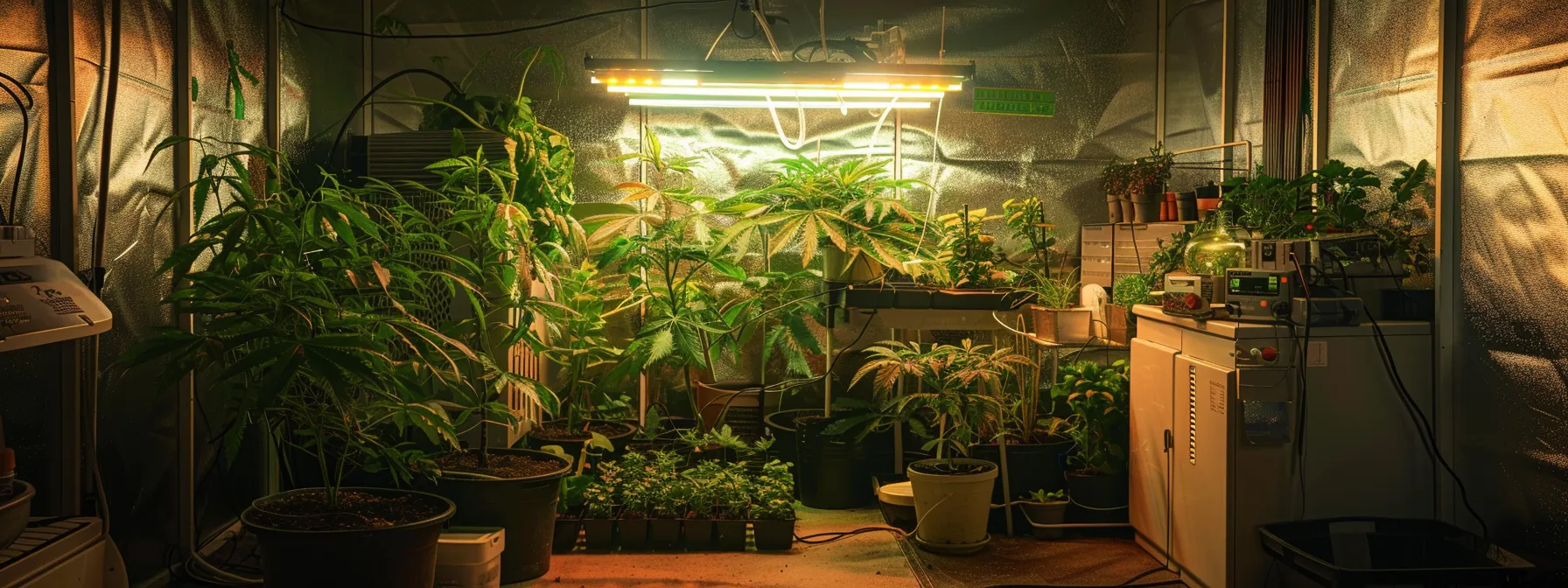
Beginner growers benefit from clear guidance on plant types suited for varying growth stages and space needs. The guide covers considerations like arranging a garage setup with watt-efficient lighting, using a power strip for reliable equipment, and selecting the right soil to support healthy plants throughout cultivation.
Ideal Plant Types for Beginner Growers
Beginner growers are advised to start with herb species known for their adaptability and ease of care, as these plants respond favorably to careful control of essential factors. The grow tent's construction supports effective automation for watering and filtration systems, ensuring that every plant receives proper nutrition while using a reliable power cord for all electrical components.
New cultivators often choose herb plants for their simple care requirements and proven track record in confined environments. By investing in a well-structured system with proper construction techniques and reliable automation, growers can maintain consistent filtration and use an efficient power cord setup, ensuring healthier plants and a more successful cultivation experience.
Consideration for Growth Stages and Space Requirements
Experienced cultivators emphasize that understanding growth stages is crucial when planning your grow tent layout. They note that proper allocation of space supports effective germination and reduces the risk of disease, while sensors and steady electricity improve monitoring conditions akin to precision instruments used on Mars missions.
Experts suggest that matching plant size to available space helps prevent overcrowding, ensuring that each seedling receives enough air and light. Careful measurement using sensors and monitoring electricity usage offers actionable insights, enabling consistent growth without the risk of disease spread during vulnerable germination phases.
Maintaining Optimal Conditions Inside the Grow Tent
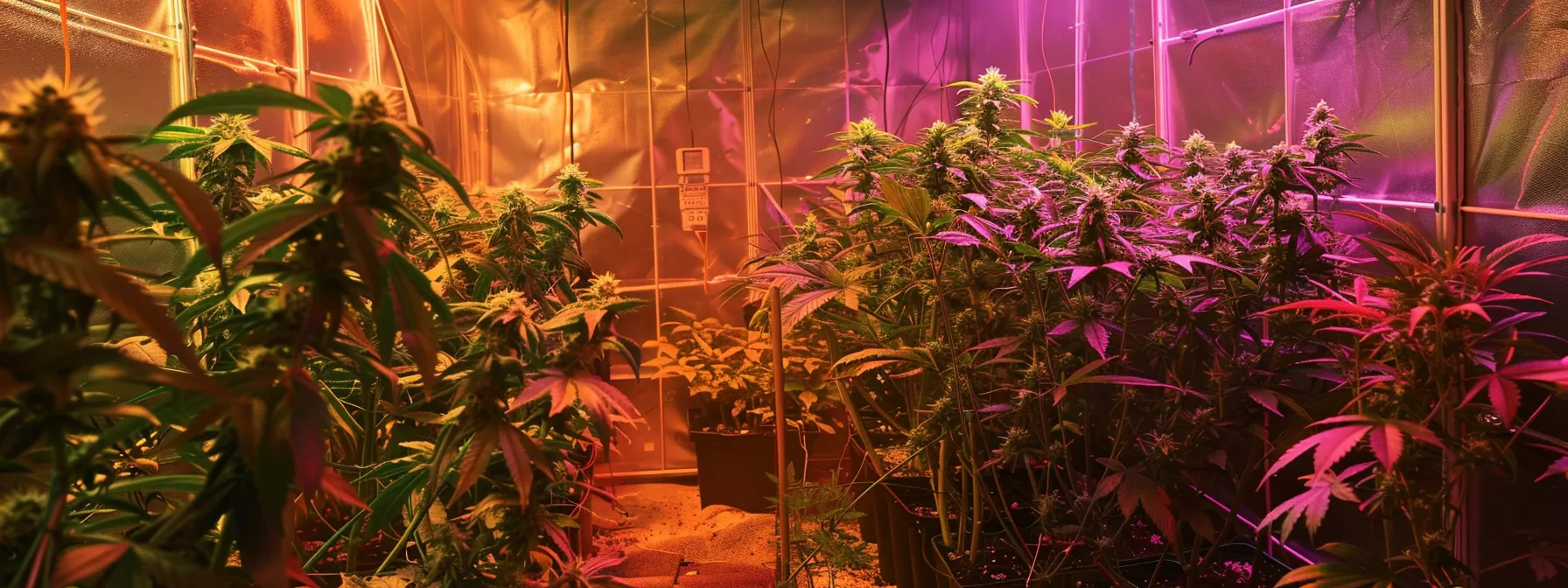
Maintaining ideal conditions inside the grow tent is crucial for successful horticulture. Proper management of heat with a humidifier stabilizes temperature and humidity levels, while planned watering and nutrient schedules support healthy plant growth. Regular monitoring for spider activity and disease on the floor provides practical insights to enhance a thriving cultivation environment.
Managing Temperature and Humidity Levels
Managing temperature and humidity levels is critical for a successful crop, as fluctuations can trigger excess moisture and create ideal conditions for mold and mildew formation in the grow tent. Proper adjustment of the intake and duct systems helps maintain a steady climate that prevents these risks and supports steady growth:
| Parameter | Description |
|---|---|
| Temperature Control | Regulates heat to prevent stress and encourage uniform growth. |
| Humidity Management | Reduces moisture to minimize mold and mildew issues. |
| Air Intake and Duct | Ensures consistent airflow to stabilize the climate inside the tent. |
Careful monitoring and adjustment of the controlled environment help safeguard the crop from adverse conditions and offer practical solutions to common cultivation challenges. Regular maintenance of airflow and humidity sensors works to optimize the overall performance of the grow tent setup.
Watering and Nutrient Schedules for Healthy Plants
The guide recommends a regular watering schedule and balanced nutrient menu to support plant health in a grow tent. Experts advise that cultivators consider using glass containers for nutrient solutions to prevent contamination, and integrate an exhaust system to manage humidity and airflow, ensuring the setup remains optimal for both soil and hydroponics-based systems:
| Factor | Recommendation |
|---|---|
| Watering Schedule | Set consistent intervals to avoid overwatering and dry spells. |
| Nutrient Menu | Use balanced nutrient formulations suitable for both soil and hydroponics. |
| Airflow | Employ an exhaust system to regulate temperature and humidity levels. |
Maintaining proper watering and nutrient schedules is critical for healthy plant development in a tent setup. The framework supports actionable insights, where detailed scheduling helps minimize nutrient deficiencies while promoting balanced growth in controlled environments, ensuring that each plant achieves optimal development through practical feeding practices.
Regular Monitoring for Pests and Diseases
Regular checks for pest activity ensure that every seedling and seed is protected from infestations that could destabilize the carefully managed climate. Routine assessments help maintain proper humidity levels and ventilation, which are essential to support robust growth in a controlled environment.
Practical insights recommend inspectors look for early signs of trouble to avoid costly interventions later:
- Examine leaves and stems for visible damage
- Monitor humidity and ventilation systems regularly
- Check the base area where excess moisture can cause problems
Cultivators who consistently monitor these factors enjoy a steady environment that supports healthy seedling development.
Troubleshooting Common Challenges in Grow Tent Cultivation
This section addresses issues such as light burn and overwatering, nutrient deficiencies, and mold control. With guidance on using duct tape for repairs, managing light intensity, proper air filter placement, and maximizing space, readers gain valuable tips to maintain a healthy grow environment. Practical insights prepare beginners to tackle challenges effectively in a controlled setting.
Addressing Light Burn and Overwatering Issues
The guide explains that light burn often results from high-intensity grow lights placed too close to plants, causing leaf damage and discoloration. Experts advise adjusting light height and intensity to protect delicate foliage while ensuring adequate coverage for healthy growth.
Overwatering can lead to root rot and stunted growth in grow tent setups, making careful moisture control crucial. Professionals suggest monitoring water schedules and soil moisture levels to maintain balanced hydration and encourage optimal plant development.
Identifying Nutrient Deficiencies and Solutions
Identifying nutrient shortages is crucial for optimal plant development in a grow tent setup. Professionals recommend monitoring leaf color and growth patterns, as these indicators often point to missing nutrients; the process includes regularly testing soil pH and moisture levels to pinpoint the issue:
- Examine leaves for yellowing or discoloration
- Test soil pH to ensure balance
- Assess moisture levels for signs of over- or under-watering
Once deficiencies are detected, expert solutions involve adjusting nutrient applications and using targeted supplements to restore balance. Practitioners advise starting with small doses and gradually increasing to avoid further imbalances, making careful observation essential for successful cultivation.
Preventing Mold and Mildew in Your Grow Tent Environment
Effective mold and mildew prevention in a grow tent environment involves maintaining proper humidity and regular air circulation. Cultivators should monitor temperature using reliable thermometers and ensure that ventilation systems work efficiently to reduce moisture build-up within the tent.
Implementing routine checks and cleaning procedures aids in keeping the setup free of harmful fungal growth:
| Action Step | Purpose |
|---|---|
| Monitor temperature | Regulate heat levels to deter humidity spikes |
| Improve airflow | Promote consistent ventilation to lower moisture |
| Clean surfaces | Remove residual dampness that encourages mold |
Frequently Asked Questions
What benefits do grow tents offer for indoor cultivation?
Grow tents offer precise temperature and humidity control, efficient space management, and superior light distribution, ensuring consistent and healthy growth for cannabis plants indoors.
What essential equipment is required for a grow tent setup?
Essential equipment includes high-quality grow lights, a reliable ventilation system paired with a carbon filter, environmental controllers, and reflective material to maximize light efficiency.
How do you arrange a grow tent step by step?
Begin by selecting a proper location, assembling frame components, installing reflective material, mounting ventilation and lighting systems, and organizing electrical supplies. Securing the structure promotes an optimal setup for cannabis cultivation.
Which plants thrive best in a grow tent?
Cannabis cultivars typically flourish in a grow tent due to controlled lighting and humidity. Compact, fast-growing strains paired with herbs like basil thrive under these optimal indoor conditions.
How can optimal conditions be maintained in a grow tent?
Maintaining a stable temperature, humidity control, proper ventilation, appropriate LED lighting setup, and routine water management are vital factors for optimal conditions in a grow tent, ensuring quality plant growth and efficient cultivation.
Conclusion
The Grow Tent Setup Guide provides valuable insights designed to help beginners build and tackle a controlled cultivation space. It highlights the need to manage essential factors such as lighting, ventilation, and nutrient schedules to achieve healthy plant growth. The guide offers practical, step-by-step instructions and tailored advice that empower growers to create a productive environment. Readers leave with a clear understanding of how a well-planned grow tent setup can lead to a successful cultivation experience.


